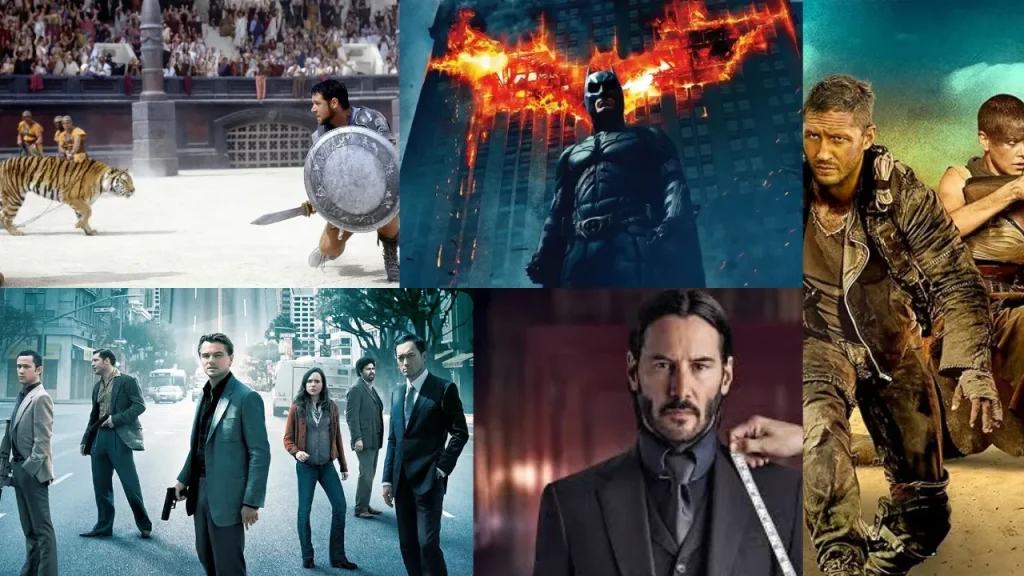High octane films have carved a unique space in cinema, delivering heart-pounding action, breathtaking stunts, and narratives that keep audiences glued to their seats. These movies thrive on intensity, blending raw energy with compelling stories to create experiences that resonate long after the credits roll. From explosive car chases to edge-of-your-seat fight sequences, high octane films are a celebration of adrenaline-fueled storytelling that captivates viewers across generations.
Defining the High Octane Genre
What sets high octane films apart is their relentless pace and focus on visceral excitement. These movies often feature larger-than-life characters, intricate action choreography, and a knack for pushing the boundaries of what’s possible on screen. Whether it’s a heist gone wrong, a rogue hero saving the world, or a high-stakes race against time, the genre prioritizes momentum. Films like Mad Max: Fury Road and The Fast and the Furious series exemplify this, with their blend of practical stunts, visual spectacle, and emotional stakes that amplify the thrill.
Visit Also: 1xrodar
The Evolution of High Octane Cinema
The roots of high octane films trace back to early action classics like Bullitt and The French Connection, which introduced iconic car chases that set a benchmark for the genre. Over decades, advancements in technology and filmmaking techniques have elevated these movies to new heights. The 1980s brought muscle-bound heroes in films like Die Hard, while the 2000s saw a surge in franchise-driven spectacles like Mission: Impossible. Today, high octane films continue to evolve, incorporating cutting-edge CGI, drone cinematography, and real-world stunts to deliver jaw-dropping sequences that feel both grounded and fantastical.
Practical Stunts vs. Digital Effects
A hallmark of high octane films is their commitment to authenticity, often achieved through practical stunts. Movies like Baby Driver showcase meticulously choreographed car chases that rely on real drivers and vehicles, creating a tangible sense of danger. However, digital effects have also become integral, allowing filmmakers to craft impossible scenarios, as seen in Avengers: Endgame’s epic battles. The best high octane films strike a balance, using CGI to enhance, not replace, the raw impact of real-world action, ensuring audiences feel the weight of every explosion and crash.
Visit Also: nhentabr
Iconic Elements of High Octane Films
At their core, high octane films are built on key ingredients: high-stakes conflicts, charismatic leads, and unforgettable set pieces. Protagonists like Jason Statham’s relentless operative in The Expendables or Charlize Theron’s fierce Furiosa in Mad Max embody resilience and grit, driving the narrative forward. Memorable moments, such as the skyscraper jump in Mission: Impossible – Fallout, become cultural touchstones, sparking conversations and inspiring future filmmakers. These elements combine to create a formula that’s both familiar and endlessly reinventable.
The Role of Sound and Score
Sound design and music are critical in amplifying the intensity of high octane films. The roar of engines, the screech of tires, and the thud of fists in a fight scene immerse viewers in the action. Composers like Hans Zimmer and Junkie XL craft scores that elevate tension, with pounding rhythms and soaring melodies that mirror the film’s emotional beats. In John Wick, the pulsating electronic soundtrack syncs perfectly with the choreography, turning each fight into a cinematic symphony that keeps pulses racing.
Visit Also: miofragia
Global Appeal and Cultural Impact
High octane films transcend borders, resonating with audiences worldwide due to their universal themes of survival, justice, and triumph. Bollywood’s Dhoom series and South Korea’s The Villainess showcase how different cultures interpret the genre, infusing local flavors into the high-energy formula. These films also influence fashion, music, and even video games, with titles like Need for Speed drawing direct inspiration from cinematic car culture. Their global reach underscores their ability to unite diverse audiences through shared thrills.
Challenges in Creating High Octane Films
Producing high octane films is no small feat, requiring meticulous planning and significant resources. Stunt coordination, safety protocols, and location scouting demand precision to execute complex sequences without compromising safety. Budgets can soar, as seen in Furious 7’s elaborate skydiving car stunt, which required multiple planes and cameras. Yet, when done right, these challenges yield moments that redefine action cinema, rewarding filmmakers and audiences alike with unforgettable spectacles.
The Future of High Octane Films
As technology advances, the future of high octane films looks brighter than ever. Virtual reality and immersive formats promise to place viewers directly in the action, while AI-driven effects could streamline production without sacrificing quality. Filmmakers are also embracing diverse storytelling, with more inclusive casts and narratives that reflect a global audience. Upcoming projects like the next James Bond installment and Top Gun: Maverick sequels signal that the genre’s appetite for innovation remains insatiable, ensuring high octane films will continue to thrill for years to come.
Visit Also:
